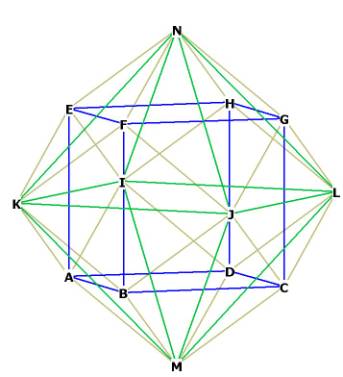|
(2019
midterm assignment) Model Midterm answers 2019 (Index) Essay 2: Start Research Report |
 |
Timothy Doherty
H. G. Wells and the Upside of Annihilation
In my pre-midterm I planned to
research satire in the works of H. G. Wells, but that topic is less relevant to
the objectives of Literature of the Future than I would like. Wells remains the
target of my research, but now the focus is on his contribution to the
development of apocalyptic fiction, a genre that, prior to the start of this
semester, held very little personal or professional interest for me. Re-reading
The Time Machine and discovering
The Parable of the Sower reminded me
that apocalyptic dystopian and utopian narratives can be vehicles for social
criticism. More important than any professional benefit I might receive from
studying this genre is the impact that well-crafted, critical narratives have on
society.
H. G. Wells set a standard for encapsulating social criticism in apocalyptic
narratives that modern authors like Octavia Butler match and occasionally
exceed; becoming more than disciples of Wells’s genius, Butler and others break
new ground in the heavily trafficked genre of humanity’s imagined end.
Before discussing the relevance or purpose of apocalyptic fiction it is
necessary to establish a working definition of the term in the context of the
content and objectives of Literature of the Future. Apocalyptic fiction is
inspired by the idea of millennialism or belief in “an end-time or
transformation of the world” (White). Millennialism in Western culture descends
from apocalyptic predictions in the texts of Judaism, Christianity, and Islam.
Within the context of Literature of the Future, large-scale (affecting humanity
as a whole) apocalypses occur in The Revelation of John,
Parable of the Sower, and
The Time Machine.
The vision of humanity’s destruction in H. G. Wells’s
The Time Machine follows Charles Darwin’s evolutionary model and occurs in
minute steps over millennia. According to Frank D. McConnell’s “H. G. Wells:
Utopia and Doomsday,” Wells believed “society was on the verge of
overspecializing itself into extinction” (183). McConnell specifically points to
The War of the Worlds as an example of Wells’s literary war against
specialization, but the evolution of humans into Morlocks and Eloi in The
Time Machine is equally relevant to the argument. McConnell begins his
article by quoting the first two sentences of the following paragraph, evoking
the spirit of Wells’s “melancholy observation” (176), while leaving out the Time
Traveler’s critical development of the point:
I grieved to think how brief the dream of the human
intellect had been. It had committed suicide. It had set itself steadfastly
towards comfort and ease, a balanced society with security and permanency as its
watchword, it had attained its hopes—to come to this at last. Once, life and
property must have reached almost absolute safety. The rich had been assured of
his wealth and comfort, the toiler assured of his life and work. No doubt in
that perfect world there had been no unemployed problem, no social question left
unsolved. And a great quiet had followed. (10.2)
This is Wells’s first fictional apocalypse; it is gradual
and avoidable, if Victorian society would listen to Wells, who McConnell
characterizes as the “man who whistles loudest in the dark [and] is likely to be
the one who feels the darkness most” (185).
Like Wells’s Victorian apocalypse, society’s collapse in
Parable of the Sower is avoidable,
the result of human-driven climate change; however, Butler’s millennial vision
unfolds in the decades preceding the beginning of the novel and leaves enough
people struggling to survive for humanity to have some hope of salvation. Jim
Miller’s “Post-Apocalyptic Hoping: Octavia Butler’s Dystopian/Utopian Vision”
explores the thin thread of hope Butler suspends in her brutal vision of the
near future: “this novel offers us no comforting answers, preferring instead to
drag us through a world full of violence, degradation, and hate, rather than
constructing a utopian blueprint. . . . Butler’s hope is a post-utopian one,
tempered by the lessons of the past. Perhaps, though, this makes her vision more
tangible and enduring in an era of diminished expectations” (357).
The apocalypse in
Parable pointedly lacks the flash of a Hollywood disaster movie; instead,
Butler builds a plausible extrapolation of the socioeconomic conflict in 1990s
Los Angeles and weaves in a hopeful protagonist’s dream of saving humanity.
Lauren’s vision of salvation is naïve—Butler makes it intentionally simplistic
to remind the reader that Parable
does not offer a solution; in the book’s final conversation, Bankole speaks for
Butler and the reader in an attempt to temper Lauren’s single-minded optimism:
“As bright as you are, I don’t think you understand—I
don’t think you can understand what we’ve lost. Perhaps that’s a blessing.”
“God is Change,” I [Lauren] said.
“Olamina, that doesn’t mean anything.”
“It means everything. Everything!” (Butler 327-328)
In an era of Miller’s “diminished expectations,” maybe
Lauren’s youthful enthusiasm will be contagious.
Later in his career, Wells would write an apocalyptic
novel more like Parable than
The Time Machine in the sense that
people actively bring about their own demise;
The World Set Free becomes the
prototype for a new genre of apocalyptic fiction: the nuclear war. In “Wells and
the Liberating Atom,” David Seed names Wells’s 1914 novel as “the first
fictional description of nuclear war” and quotes Charles Gannon’s assertion that
it “establishes the ‘narrative imagery’ of the later genre” (36). McConnell does
not specifically mention World in his article but he points out that by
“World War I, Wells’s scientific romances had taken a distinctly positive turn;”
in this era Wells writes “utopian fiction” in which “the cataclysmic war to
which mankind [is] surely doomed” leads to “a new golden age of rational
organization and scientific progress” (184). However, I must point out that
Wells subscribed to his own socialist philosophy, in which his idea of utopia is
“a benevolent dictatorship where ‘voluntary noblemen’ would exercise a firm hand
(controlling human procreation for example)” (McConnell 179). This later version
of Wells’s apocalypse differs from Octavia Butler’s and his own vision in The
Time Machine and more closely resembles the biblical model in which
mankind’s destruction is both inevitable and necessary for society to transcend
its current state of corruption.
Apocalyptic narratives in Western literature date back at
least as far as the writing of the Old Testament of the Bible and are more
prevalent than ever in this golden age of multimedia storytelling. Before
reading Parable of the Sower and re-reading The Time Machine this
semester, I had written off everything apocalyptic; it is easier to dismiss the
whole diluted genre than to filter through the deluge of dystopias, utopias,
zombies, and irradiated wasteland clichés to find the authors and filmmakers who
have something novel to convey. For the final version of this research report, I
will read Wells’s The World Set Free and Mind at the End of its Tether,
and expand my search for secondary sources in an effort to better understand
Wells’s optimism about impending doom and to consider the power of futuristic
narratives as tools for abstractly examining societal imperfections.
McConnell, Frank D. “H. G. Wells: Utopia and Doomsday.” The Wilson Quarterly,
vol. 4, no. 3, Summer 1980, pp. 176-186. JSTOR,
https//www.jstor.org/stable/40255984.
Miller, Jim. “Octavia Butler’s Dystopian/Utopian Vision.”
Science Fiction Studies, vol. 25, no.
2, July 1998, pp. 336-360. JSTOR, https//www.jstor.org/stable/4240705.
Seed, David. “H. G. Wells and the Liberating Atom.” Science Fiction Studies,
vol. 30, no. 1, March 2003, pp. 33-48. JSTOR,
https//www.jstor.org/stable/4241139.
 |
 |
 |
